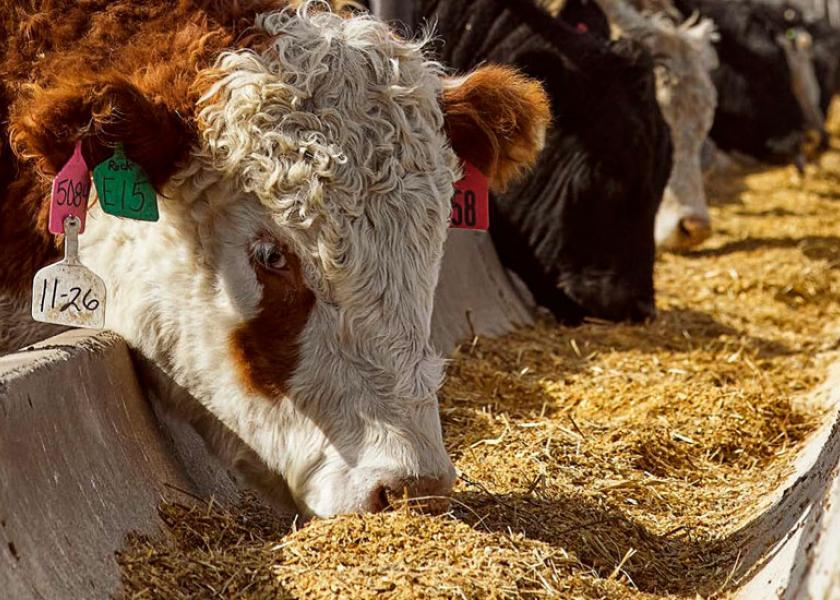Nalivka: Looking Ahead into 2022 – Stronger Markets & Increased Opportunity

The last two years may be the most interesting and challenging that I have observed over the last nearly 40 years of market analysis, and years working on large cattle ranches before that. I admit that from perspective of the market outlook and this year’s drought, it is nice to be at the end of 2021 and closing in on the beginning 2022.
Let’s look at prospects for 2022. I begin again by repeating markets are a function of the dynamics of supply and demand – period. While this may seem like one of those overused statements made by economists, both have played an important role in markets over the past 6 months as well as the outlook going forward.
Beginning with the supply aspect, I don’t think anyone would argue that cattle numbers will be declining as low prices and drought have both led to herd liquidation over the past two years.
Through the end of October, beef cow slaughter was 10% higher than a year earlier. In fact, the industry slaughtered the largest number of beef cows since 2011, a year when herd liquidation driven by drought beginning in the Southwest and moving into the Midwest, pushed U.S. cattle numbers to a 50-year low by the beginning of 2014. Dairy cow slaughter is up 3% year-to-date while total cow slaughter through October posted a 6% increase from year-earlier and the highest since 1996. Furthermore, we started with nearly the same U.S. cattle inventory at the beginning of 2011 as we did at the beginning of 2020.
How about the other part of the breeding herd - heifers? Heifer slaughter through the end of October was the highest since 2011. I am forecasting 2022 heifer slaughter to be down 4% from this year and just marginally higher than during 2012. Reduced cattle numbers for 2022 and likely through 2024 are evident. My forecast or estimate for the January 1 total cattle inventory is 91.25 million, down 2% from the beginning of 2021, the lowest since 2015, and 475,000 more than the beginning 2012 cattle herd. That’s a lot of numbers, but important as we look ahead.
I am forecasting 2022 cattle slaughter to be down just over 2% from this year’s 3% increase with fed cattle numbers also down 2% and cow slaughter down 4% from a year earlier. While there is always uncertainty with carcass weights, I would expect weights to fall as fed cattle numbers decline and feedlots are increasingly current with showlists marketing into a strong market. Also feed costs and cost of gain will continue to be relatively high. So, assuming a 1% year-over-year drop in carcass weights, beef production in 2022 will be down 3% from my estimate for 2021.
Moving on to the next critical piece of the puzzle - beef demand - I have consistently said in speaking with clients this year that while beef production will be down in 2022, the outlook for prices next year will be highly dependent upon demand following this year’s surge as consumers satisfied pent-up demand with restaurants openings during the second-half of this year. In addition, buying at the supermarket meat case was driven by consumer preference in the face of rising prices.
If only we had to think about the supply, but that is not the case as it takes a consumer willing and able to buy your beef. Demand was definitely increasing and I would submit that consistent quality has been the key. The $64 question was still whether demand will hold steady into 2022. Other costs in the household budget, particularly gas at the pump, are rising sharply with inflation posting a 6% annualized increase and the highest in 30 years.
I do believe and I am assuming in my forecasts that even if demand weakens somewhat, prices across the beef complex, including fed cattle, feeders, and calves, will post notable gains during 2022. This is further supported by global beef demand. U.S. beef exports through September are up 21% from a year earlier with the value of fresh and frozen beef exports and variety meats posting a 40% increase over the same period a year earlier. That value of those U.S. beef export categories is over $7 billion! Japan accounted for 24% of those exports while China’s share grew from 2% for all of 2020 to 15% for January-September 2021. That is solid support to U.S. beef markets and will continue as a significant contributor to demand going forward.
The outlook for the industry is looking quite optimistic going into 2022 and beyond both from the perspective of the current cattle cycle and solid consumer demand. However, I believe that the impact of the last 18 months will lead to many changes in the entire beef industry through production and processing and last but not least, retailers and foodservice who put that product in front of the consumer.







